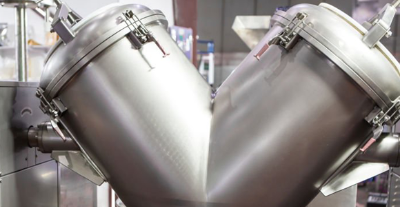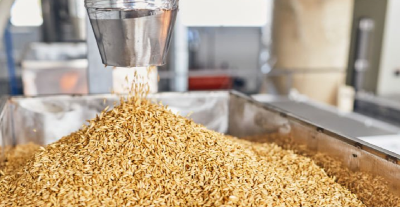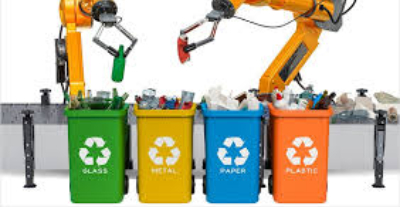
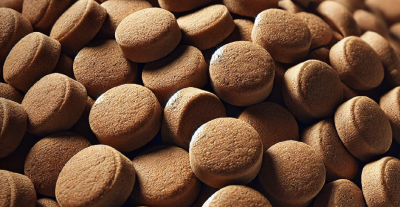 Visum Palm™ taşınabilir NIR ile hayvan yemlerinde Su Aktivitesi Analizi
Visum Palm™ taşınabilir NIR ile hayvan yemlerinde Su Aktivitesi Analizi
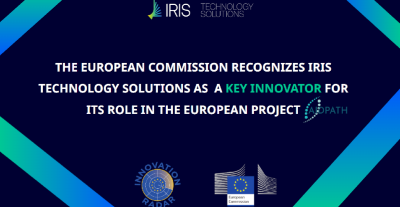 European Commission Highlights IRIS Technology Solutions for its Innovative Role in the AIDPATH Decentralized Advanced Therapy Production Project
European Commission Highlights IRIS Technology Solutions for its Innovative Role in the AIDPATH Decentralized Advanced Therapy Production Project

Visum Raman In-Line™ ile sakızların gerçek zamanlı pişme derecesi takibi

Visum Raman In-Line™ ile sakızların gerçek zamanlı pişme derecesi takibi | Sakızların pişirme derecesinin izlenmesi
Jöleli şekerler, jöleli fasulyeler, jöleli meyve şekerleri veya sakızlar olarak da adlandırılan jöleli tatlılar, bir asırdan fazla bir süredir dünya çapında popüler olan ve son zamanlarda sağlıklı şekerlerin üretimi için tariflerine vitaminleri de dahil eden çiğneme jölesi bazlı şekerlerin geniş bir kategorisidir.
Reçeteye bağlı olarak, jelibonlar nişasta, pektin, jelatin, glikoz şurubu, şeker, su, sodyum sitrat, meyve ve bitki özleri, tatlandırıcılar, renklendiriciler ve diğer katkı maddelerinden yapılır, tüm bu bileşenler birlikte karıştırılır ve en iyi tadı ve dokuyu elde etmek için çeşitli özellikler kontrol edilir. Bu gereksinimleri karşılamak için, sakızlı hamur üretimi sırasında kritik bir faktör nişastanın jelatinleşme derecesidir ve bu nedenle kritik bir faktör de pişirme işleminden sonra kalan nişastanın analiz edilmesidir.
Level of starch cooking: the gelatinisation process
Sakızlı kütlenin jelatinleşmesini sağlamak için genellikle patates ve mısır nişastasının en popüler olduğu ve geniş bir modifikasyon yelpazesinde mevcut olan nişasta kullanılır.
Jelatinleşme ya da ‘pişirme’, nişasta granüllerinin hidrojen bağlarını kıran ve granülleri şeker kütlesi içinde çözen su ve sıcaklık etkisine maruz bırakılması işlemidir. Daha sonra bir biriktirme ve kurutma işlemine tabi tutulduktan sonra, sakızın nihai dokusu ve kıvamı elde edilir.
Şekerleme endüstrisinde jelatinleşme genellikle sürekli pişirme sistemlerinde gerçekleşir
Traditional analysis
Şu anda, üretim sırasında pişirme derecesini sürekli olarak izlemek için hat içi bir yöntem bulunmamaktadır. Pişme derecesini belirlemek için çeşitli yöntemler olmasına rağmen, bunların hepsi numune almaya ve bunları hat dışında analiz etmeye dayanmaktadır. Bu teknik yoğun emek gerektirir ve kalifiye personel gerektirir, ayrıca karar vermenin ve proses parametrelerini gerçek zamanlı olarak düzeltebilmenin ve böylece yanlış bir dokuya sahip yumuşak sakızlardan veya kalıptan çıkarma işleminde müteakip sorunlardan kaçınmanın zorluğuna ek olarak.
Pişirme sürecinin son noktasını kontrol etmek için kullanılan yöntemlerden biri, polarize ışık mikroskobu ile nişasta granüllerini sayma tekniği kullanılarak laboratuvarda gerçekleştirilir.
Bu teknik, nişasta partiküllerinin görsel olarak sayılmasından oluşur ve numunede bulunan partiküllerin miktarına bağlı olarak analist, pişirmenin tatmin edici olup olmadığını veya işlem parametrelerini (sıcaklık) değiştirmenin veya pişirme süresini uzatmanın gerekli olup olmadığını belirleyebilir. Numunedeki nişasta granüllerinin sayısı 10’dan az veya eşitse, pişirme derecesinin yeterli olduğu kabul edilirken, sayı daha yüksekse, pişirme derecesinin yetersiz olduğu kabul edilir.
Polarize ışık mikroskobu altında nişasta granülleri ve sayım için kırmızı ile işaretlenmiş alan.
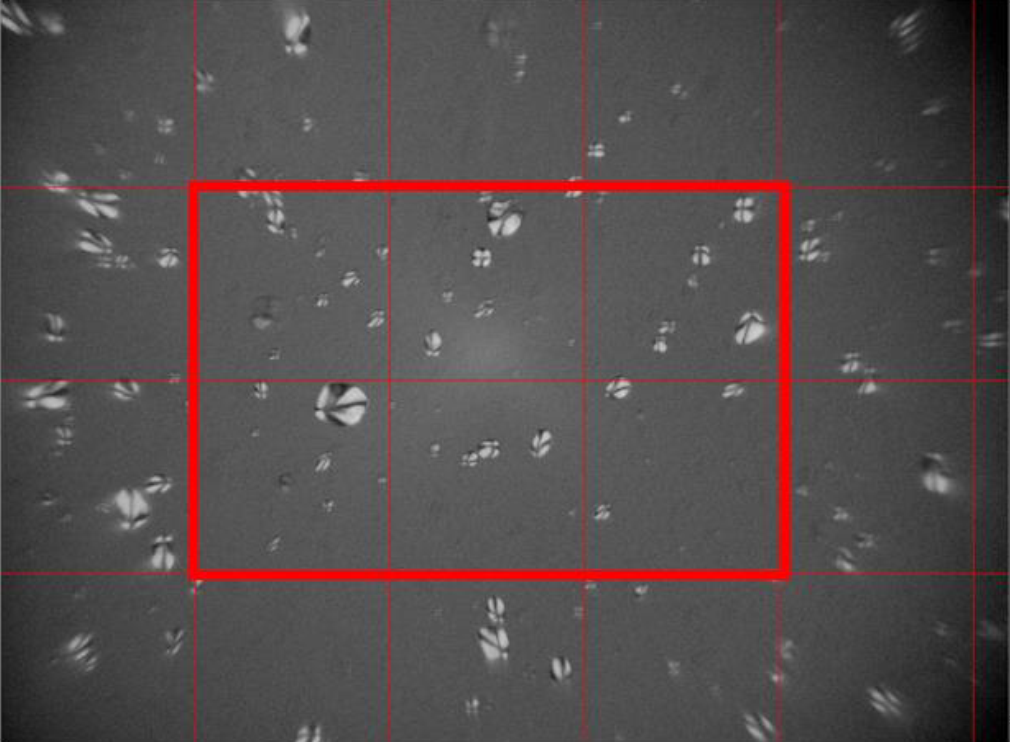
A partnership for the future of the industry
Endüstriyel süreçlerin kontrolü ve izlenmesine yönelik spektroskopi tabanlı çözümlerin önde gelen İspanyol üreticisi IRIS Technology Solutions SL, dünya çapında sakız üretimi için makine üreticisi olan Hollandalı Tanis Confectionery B.V. ile işbirliği yaparak nişasta jelatinleşmesinin izlenmesine yönelik gerçek zamanlı bir yöntem geliştirmek ve böylece tüm sektöre alternatif, katma değerli bir çözüm sunmak üzere bir araya geldi.
Bu işbirliği çerçevesinde, IRIS Technology Solutions SL’nin Visum Raman In-Line™ analizörü kullanılarak Tanis İnovasyon Merkezi (Hollanda) tesislerinde aylardır testler yapılmaktadır.
Raman spektroskopisi, bir sistemdeki titreşimsel, rotasyonel ve diğer düşük frekanslı modları gözlemlemek için kullanılan analitik bir tekniktir. Moleküler titreşimler ve kimyasal bileşim hakkında ayrıntılı bilgi sağlamak için bir lazer olan monokromatik ışığın elastik olmayan saçılımına dayanır. NIR spektroskopisinin aksine, özellikle sulu matrislerin izlenmesi veya suda çözünmüş bir analitin konsantrasyonunun belirlenmesi için uygundur.
Bu teknoloji, gıda sınıfı bir daldırma probu yerleştirerek ürün akışını, bu durumda sakızlı hamuru, gerçek zamanlı olarak analiz eden, uygun kalibrasyonla süreçte neler olup bittiğine dair gerçek zamanlı sonuçlar sağlayabilen, invazif olmayan bir analitik tekniktir
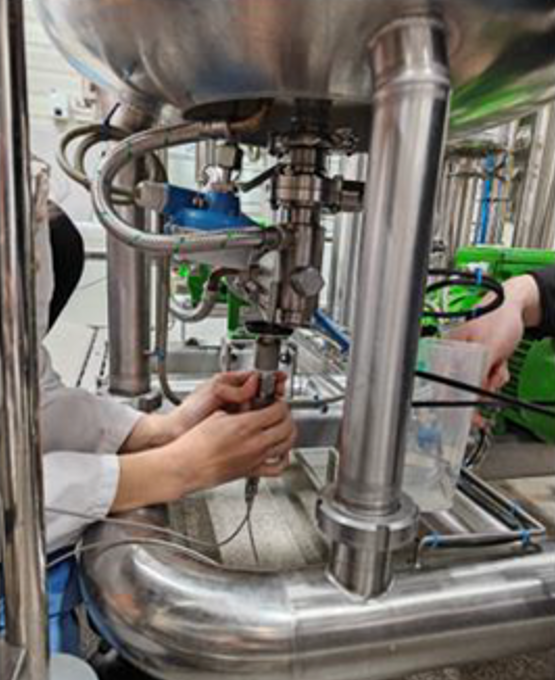
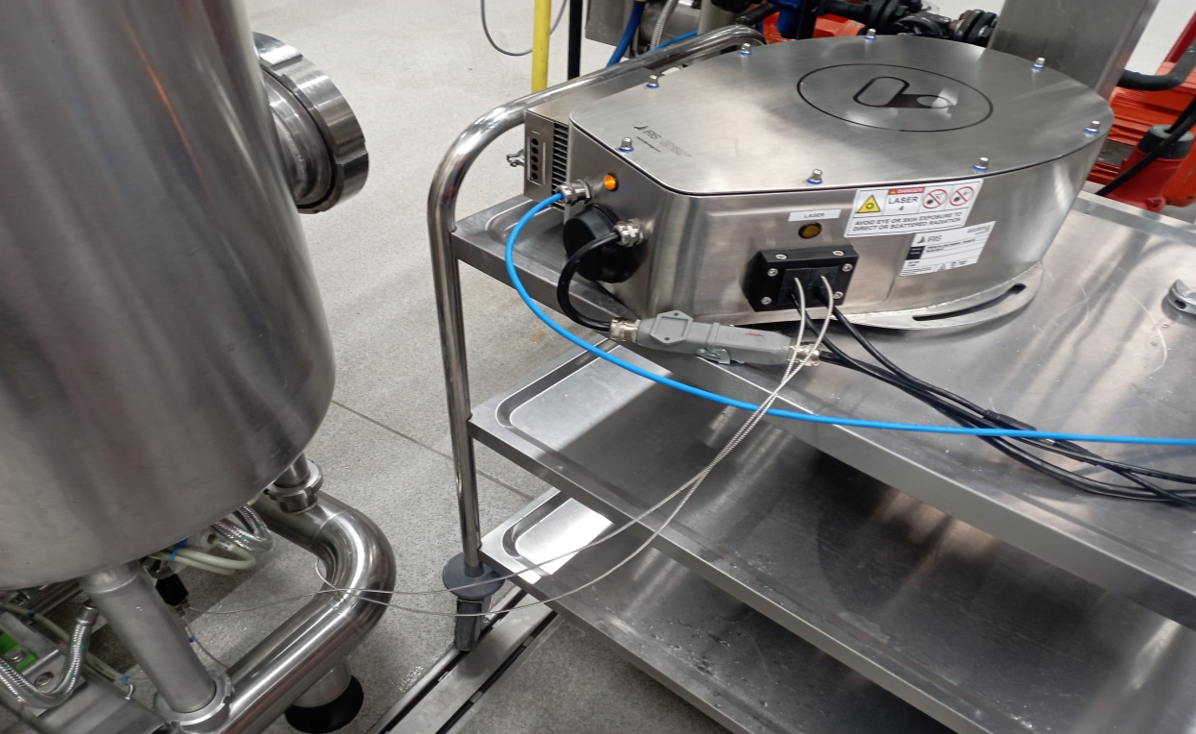
Developing a real-time analytical method
Test aşamasında, patates nişastası, mısır nişastası ve nişasta ile jelatin kombinasyonuna dayalı farklı tarifler üretilmiş ve izlenmiş ve pişirme seviyesi tahmin algoritmasını (yeterince pişmiş / az pişmiş) geliştirmek amacıyla pişirme işlemi sırasında farklı nişasta jelatinleşme dereceleri elde etmek için farklı sıcaklıklardapişirilmiştir .
Visum Raman In-Line™ analizörü farklı partilerin veya tariflerin pişirme süreci boyunca spektrumları alırken, numuneler çıkarılmış ve polarize ışık mikroskobu kullanılarak görsel sayım referans yöntemiyle analiz edilmiştir.
Sürekli sürecin izlenmesi için, “Yeterince pişmiş” (≤10 nişasta granülü) ve “Az pişmiş” (>10 nişasta granülü) olmak üzere iki nihai sınıflandırma belirlemek üzere bir model geliştirilmiştir. Elde edilen sonuç, jelatinleşme derecesini doğrulamak ve herhangi bir yanlış sınıflandırmayı önlemek için yapılan 3 ardışık analizin sonucudur.
Sol: kullanılan farklı tariflerin önceden işlenmiş ortalama Raman spektrumunun karşılaştırılması. Sağda: beş tarif için modelin sınıflandırma sonuçları. Kırmızı noktalı çizginin üzerindeki noktalar yeterince pişmişolarak sınıflandırılan ölçümlere karşılık gelmektedir.
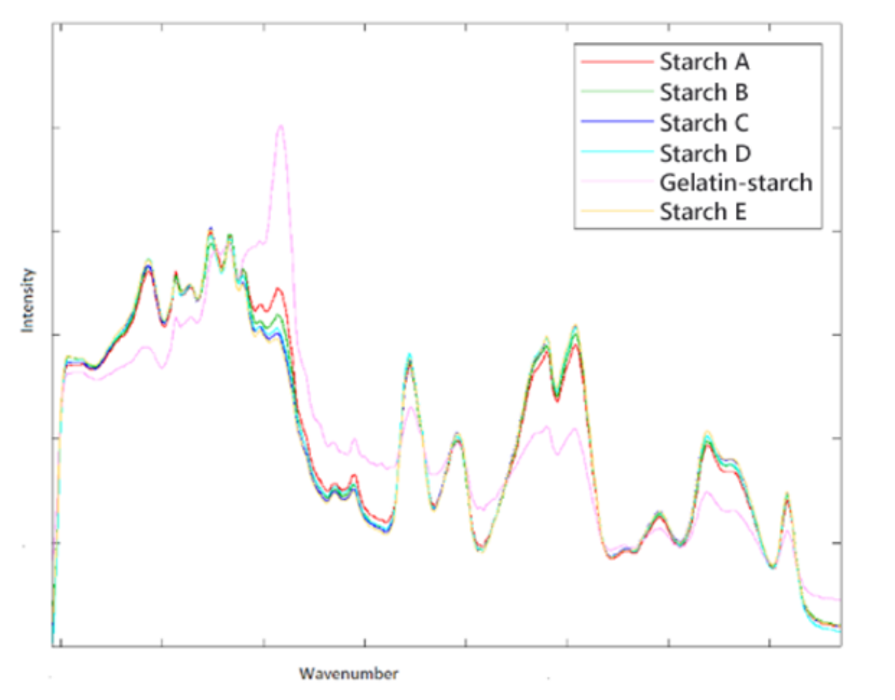
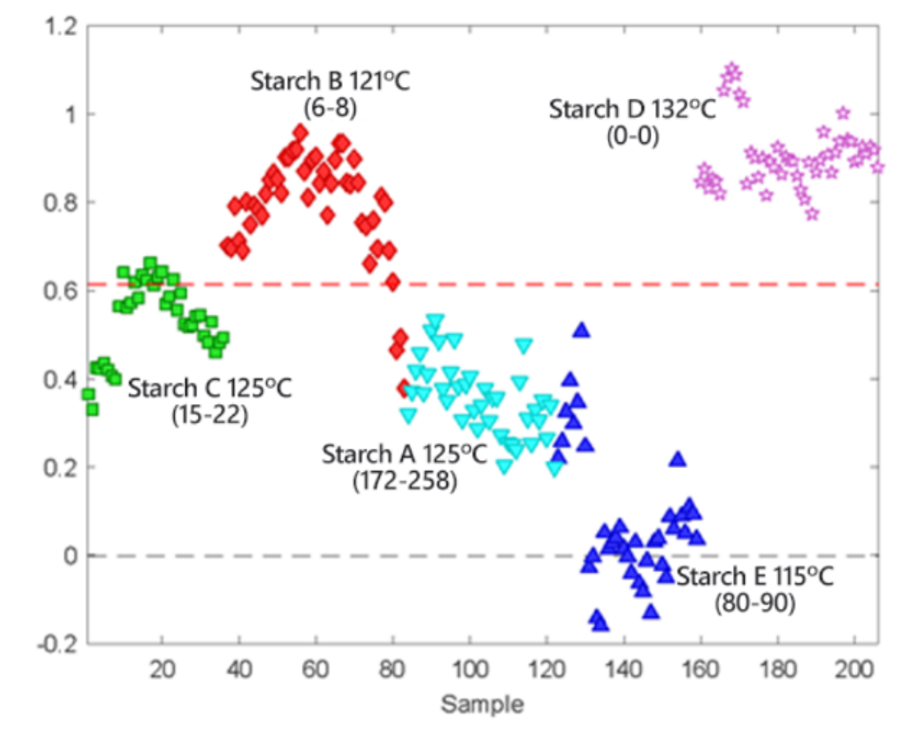
Conclusions
Yapılan testlerden, aynı tahmin modelinin hem mısır hem de patates nişastası bazlı tarifler için pişirme seviyesi tahminleri yapmak için kullanılabileceği sonucuna varılabilir.
Hem patates hem de mısır nişastasından yapılan tüm partiler için Visum Raman In-Line™ pişirme seviyelerini doğru bir şekilde sınıflandırmıştır.
Geliştirilen modellerin yanı sıra, bu inline yöntemle benzersiz şekerleme tarifleri ve malzemeleri için benzersiz modeller oluşturmak mümkündür.
Analiz edilen jelatin veya modifiye nişasta içeren tarifler için daha önemli spektral farklılıklar gözlenmiştir, bu nedenle benzer doğrulama sonuçlarıyla bu formülasyonlar için özel sınıflandırıcı tahmin modelleri gerçekleştirilmiştir.
Bu nedenle, geleneksel ve mevcut analiz yöntemine gerçekten daha verimli bir alternatif olan gerçek zamanlı raman proses analizörü ile hem mısır hem de patates nişastası bazlı jelibon hamurunun yanı sıra farklı modifiye jelatinlerin pişirme seviyesini başarılı bir şekilde tahmin etmek mümkündür.
Key features of the Visum Raman In-Line™ Process Analyser
- Sensör açıldıktan sonra kullanıma hazırdır (ısınma gerekmez).
- Endüstriyel ortamlarda çalışmak üzere tasarlanmış analizör.
- Bilgisayar ve gömülü işletim sistemi.
- 785 nm lazer uyarım kaynağı.
- Dahili soğutma sistemi -40°C’de kararlıdır.
- IP 65-68.
- Gıda sınıfı daldırma probu aracılığıyla prosese bağlantı.
- Tesisin PLC veya SCADA’sı ile farklı iletişim sürücüleri ile uyumludur.
- Borunun herhangi bir pozisyonuna kolayca entegre edilebilir.
- Az bakım gerektiren cihaz.
- Visum Master™ SMART versiyon yazılımı ile kullanıcı, farklı reçeteler veya formülasyonlar için öngörücü modeller geliştirmek, ayarlamak veya güncellemek için AI destekli bir Model Oluşturucuya sahiptir.
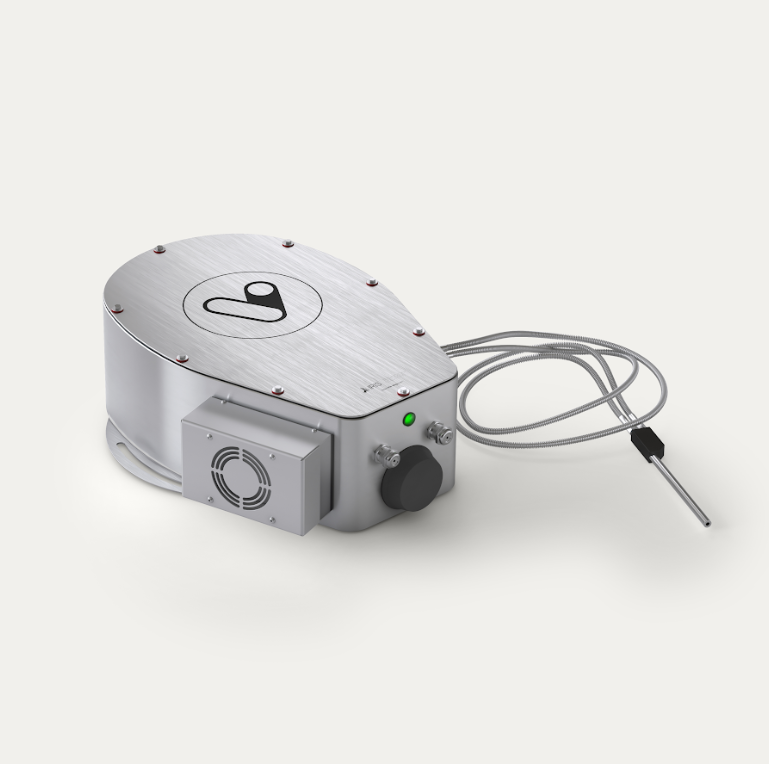
Visum Raman In-Line™ proses analizörü
